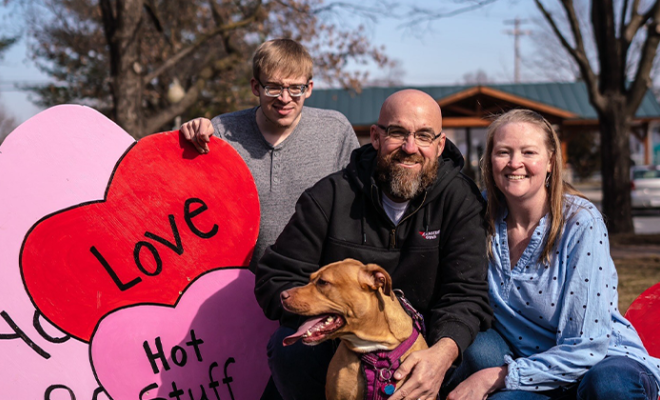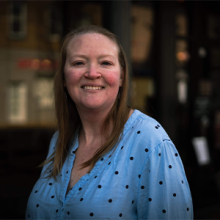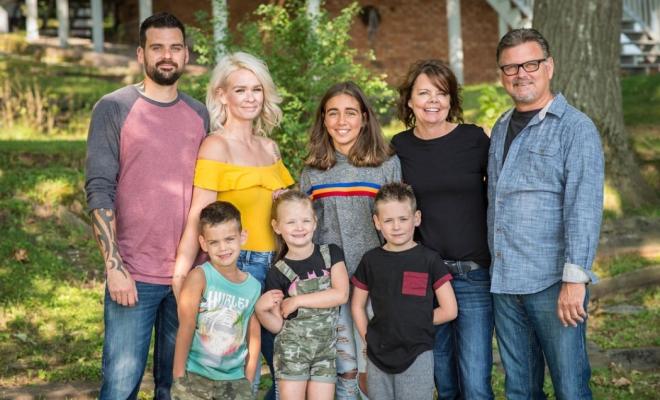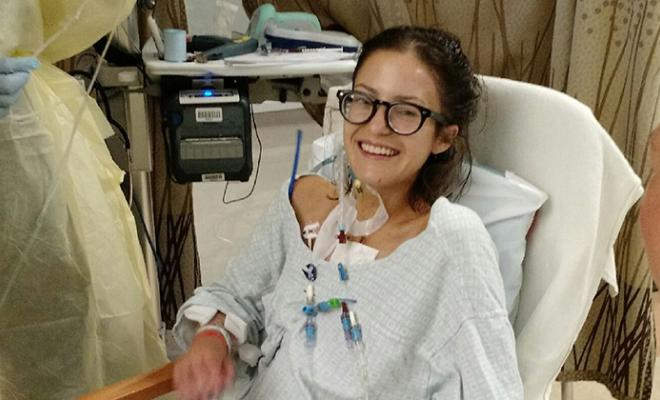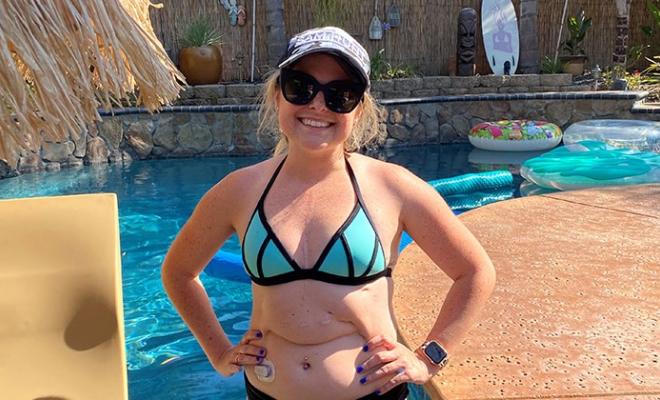Living 16 years post double-lung and liver transplant has not been easy. I remember being told at my first appointment for transplant evaluations that if all five people in the room had a lung transplant, it was likely that only two of us would survive past 5 years. As scary as hearing that was, I knew that the odds of living with advanced cystic fibrosis lung disease weren’t any better. Maybe even more nerve-wracking, was the fact that my transplant center had never done a combined lung and liver transplant before. Even knowing all of that, I was determined to move forward. After a surprise pregnancy that concluded with the birth of my son, I continued with transplant evaluations. I was placed on both lists on August 24, 2006 and received my double-lung and liver transplant on January 31, 2007.
While the recovery from the transplant went well, I had some really bad stomach pains within a couple of months that led to a Clostridioides difficile (C. diff) diagnosis. After taking an antibiotic at home that didn't work, I was sent back to my transplant center. The colorectal team looked over my case and it was determined that I needed surgery to try to clean out the infection. The surgeon said that the infection was so severe that he had to remove all but a couple of inches of my large intestine. Had I not gone to the doctor for these stomachaches, the infection would have killed me only 4 ½ months after transplant.
Along with recovering from the transplant and the total colectomy, I was also dealing with a new diabetes diagnosis. I started seeing an endocrinologist for my diabetes, and during the initial appointments, the doctor also checked my thyroid via ultrasound. The ultrasound showed that I had an enlarged thyroid but — other than that —- it looked fine. I continued with appointments for my diabetes every 3 to 6 months to make sure my A1c was on target, and about 7 years down the road, my endocrinologist wanted an updated ultrasound of my thyroid. This ultrasound showed that I had two nodules on my thyroid — one of which was a little larger than the other. The doctor decided she wanted a biopsy to check it, and it came back as suspicious for cancer. Due to my medical history, we decided it was best to remove my thyroid. Further testing once it was removed showed that it was metastatic thyroid carcinoma, which had already spread to a lymph node that was also removed during surgery.
The cancer diagnosis wasn’t really all that surprising. During my initial transplant evaluations back in 2005, I was told that I would have to see a dermatologist regularly. The reason for this is that some of the anti-rejection medications can cause cancer, especially skin cancer. I started seeing a dermatologist twice a year after my transplant, and I had my first skin cancer 8 years after transplant. And in the past 8 years since the first skin cancer detection, I have had 14 skin cancers removed.
A lot of them have been caught by me when I noticed a dry, itchy, red spot. When finding these spots, I get to my dermatologist as soon as I can to have them checked out. Many of the suspicious spots have been biopsied and have come back as squamous cell or basal cell carcinomas. Some spots have been pre-cancerous and have had to be frozen. Two of the spots that have been biopsied and came back as cancer were found during my routine exams, which I go to every 3 to 6 months.
Other appointments that I go to include yearly bone scans, yearly mammograms, dental check ups, and gynecology appointments for yearly pap smears and other small issues. I also see my primary care physician twice a year and whenever necessary for a common illness such as a cold. Sometimes the common cold in a person who has had a transplant can turn into something much worse.
Of course, I also see my lung transplant team twice a year and my liver transplant team once a year. I get labs taken every 6 weeks — sometimes more frequently if the labs show something is off. I also make sure to message my transplant teams when I am sick in case there is something they recommend that is different from what my primary care physician would recommend. I have had COVID-19 twice and kept in constant contact with my lung transplant team in case my symptoms became worse and I needed more in-depth treatment. Fortunately, with keeping on top of things, and detecting it early both times, the treatments I could do at home have been enough.
Not only is going to all of these appointments and keeping my doctors updated important, taking my medications as advised has also been key to living 16 years post-transplant. Immediately post-transplant, I took close to 60 pills a day, along with still doing a couple of breathing treatments, and taking insulin. Over the years, it has come down to about 35 pills a day, which I take at four separate times a day. I also do a nasal rinse once a day to keep my sinuses clear, Flonase twice a day, one long-acting shot of insulin daily, and Trulicity® once a week. While it is rare for me to have to take a fast-acting shot of insulin, I do have it on hand if I need it and I keep a close eye on my blood glucose numbers with a continuous glucose monitor.
Last, and probably one of the most important things for me, is my family. My husband and son have kept me going all these years. I’ve had many people tell me that I probably wouldn’t have fought as hard — before or after transplant — if I didn’t have my son to live for. Many other family members and friends have helped me too. Through sticking with all of my appointments and medications, I have welcomed 10 nieces and nephews into the world, saw my little sister get married, cared for my mom when she had her right lung transplanted, and will see another sister get married this year. I also have my CF and transplant “family” to keep me going. Hearing their stories — and telling them mine — helps more than some will ever realize.
Interested in sharing your story? The CF Community Blog wants to hear from you.

